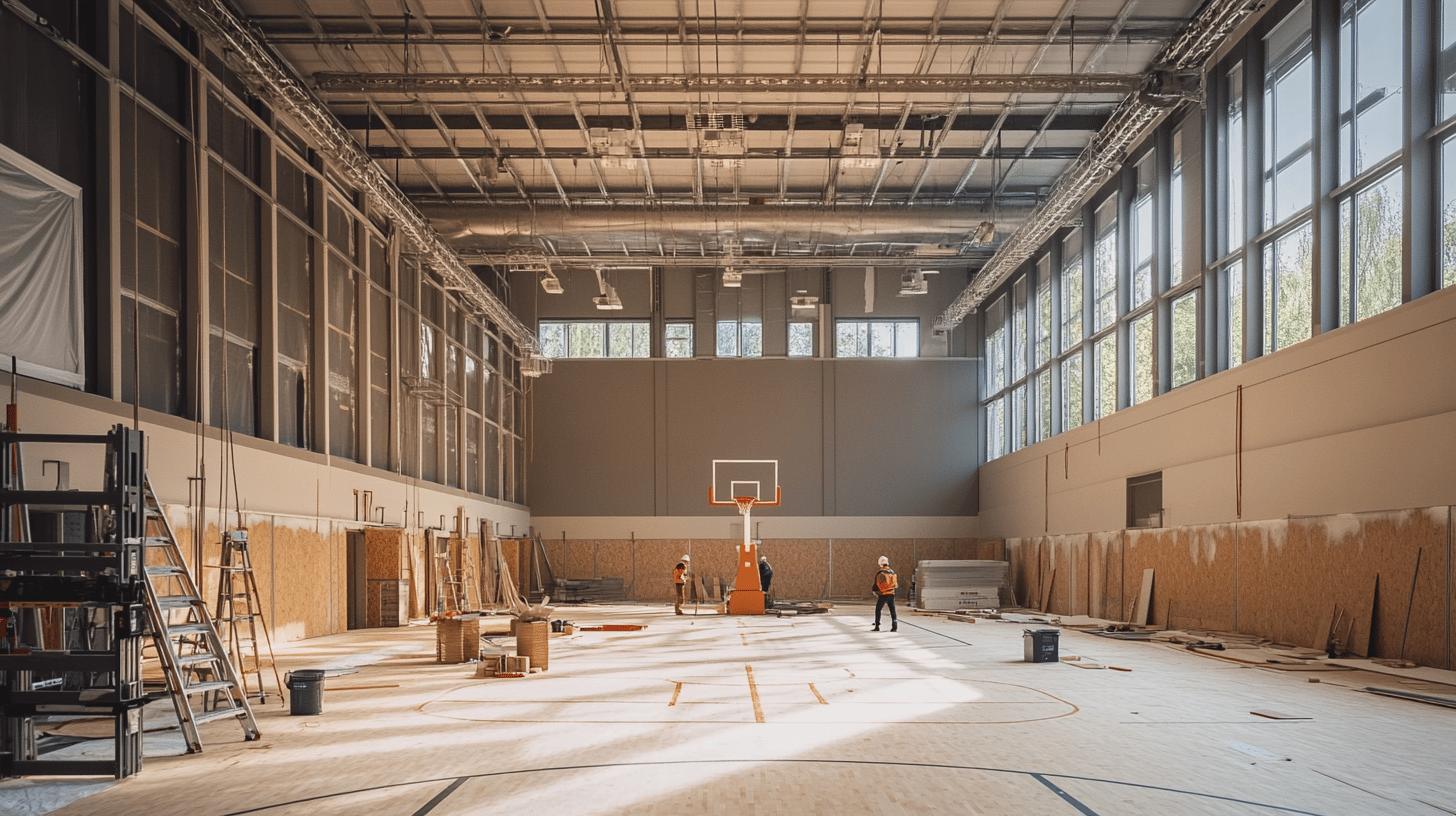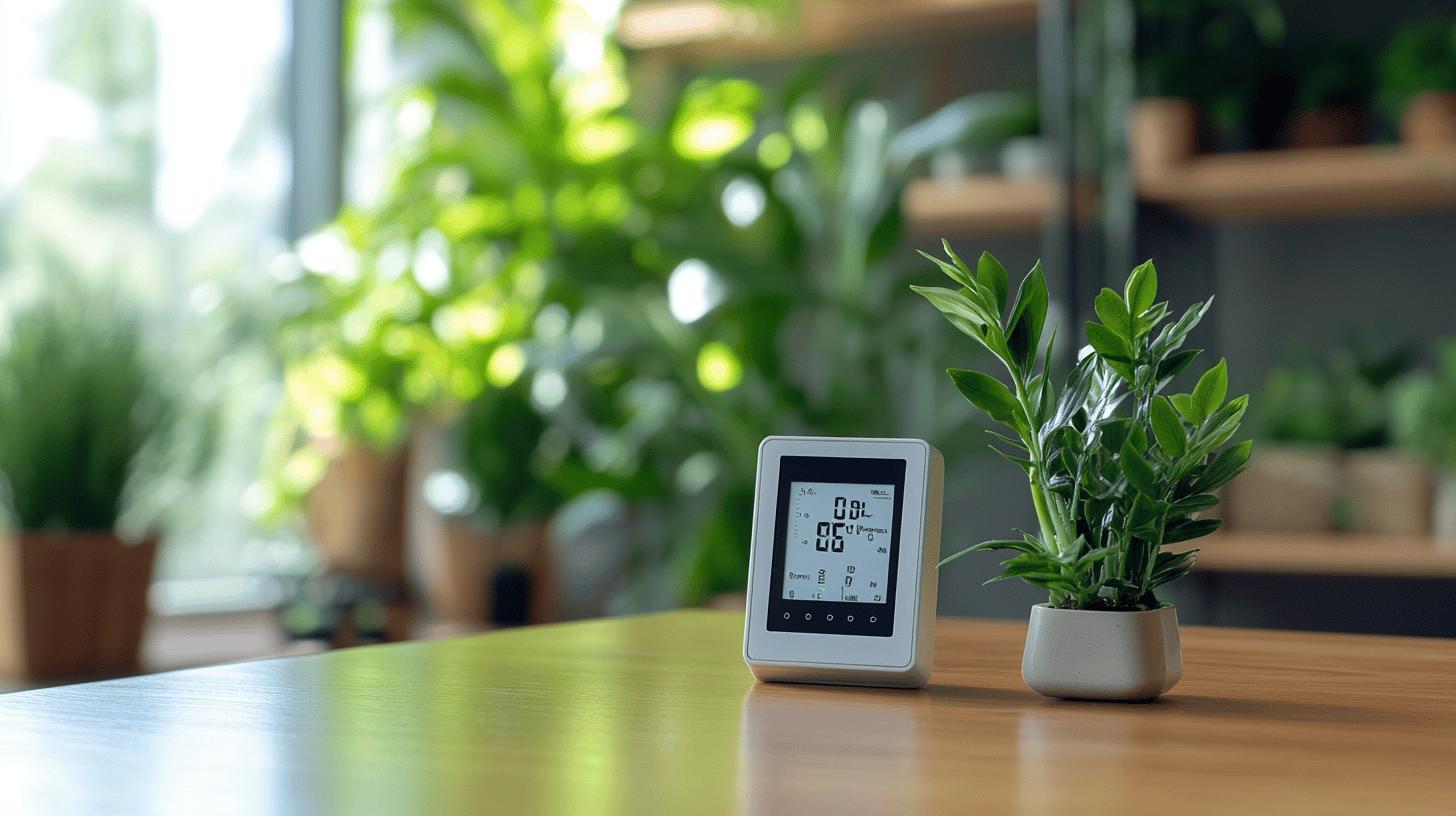So, you’re looking into sports flooring and wondering about its environmental impact, right? It’s a pretty big deal these days, with everyone trying to be more green. This article is all about how we can make sure our sports floors are not just good for athletes, but good for the planet too. We’ll be doing a bit of a Sustainability Audit to see what’s what.
Key Takeaways
- Understanding what carbon negative means is important for working out a product’s real environmental footprint.
- Environmental Product Declarations (EPDs) are like nutrition labels for products, showing their environmental impact.
- Making things in a sustainable way, like using wood waste for fuel, helps reduce waste and energy use.
- Green building trends are growing, and choosing sustainable materials can save money and make buildings more valuable.
- Reducing greenhouse gas emissions is not just good for the environment, it also helps companies save money on things like fuel and energy.
.
Understanding Carbon Negative Certification
Defining Carbon Negativity
So, what does it actually mean to be carbon negative? Well, it’s more than just reducing your carbon footprint. It’s about actively removing more carbon dioxide from the atmosphere than you’re putting in. Think of it as going beyond neutral and actually cleaning up the mess. It’s a big deal, and not many companies are doing it yet.
Carbon negativity happens when carbon dioxide is removed from the atmosphere through natural or artificial processes. Photosynthesis is a natural example, but there are also technologies like direct air capture and enhanced weathering that can help reduce carbon emissions.
The Role of Life Cycle Assessment
To achieve carbon negativity, companies need to understand the full environmental impact of their products and processes. That’s where a Life Cycle Assessment (LCA) comes in. An LCA looks at every stage of a product’s life, from raw material extraction to manufacturing, transportation, use, and disposal. By analysing each stage, companies can identify areas where they can reduce their carbon emissions and increase their carbon removal efforts. For example, modern sports halls are increasingly using eco-friendly flooring.
Here’s a simplified view of what an LCA might consider:
| Stage | Considerations |
|---|---|
| Raw Materials | Extraction, processing, transportation |
| Manufacturing | Energy use, emissions, waste generation |
| Transportation | Fuel consumption, distance travelled |
| Use | Energy consumption, maintenance requirements |
| End-of-Life | Disposal method, recycling potential |
Industry Leaders in Carbon Negative Practises
Finding companies that have achieved carbon negative certification can be tricky, but they do exist. These companies are leading the way in sustainable business practises and demonstrating that it’s possible to not only reduce your environmental impact but also actively reverse it. They often achieve this through a combination of strategies, including:
- Investing in carbon offset projects
- Using renewable energy sources
- Implementing sustainable manufacturing processes
- Developing carbon capture technologies
.
It’s important to remember that carbon negativity is a journey, not a destination. Companies need to continuously improve their practises and invest in new technologies to achieve and maintain carbon negative status. It requires a real commitment to environmental stewardship and a willingness to challenge the status quo.
Environmental Product Declarations Explained
What is an EPD?
Okay, so what exactly is an Environmental Product Declaration (EPD)? Think of it like a nutritional label, but for a product’s environmental impact. It’s a standardised way of reporting the environmental footprint of a product throughout its entire life cycle, from raw material extraction to manufacturing, use, and disposal. It covers things like:
- Carbon footprint
- Use of natural resources
- Energy consumption
.
Basically, it gives you the full picture. It’s not just about whether something is made from recycled stuff; it’s about everything that goes into making, using, and getting rid of it. You can find environmental product declaration on many products these days.
Benefits of EPDs for Sports Flooring
Why should you care about EPDs when it comes to sports flooring? Well, for starters, it’s about transparency. EPDs let you see exactly what impact a particular flooring option has on the environment. This is super useful if you’re trying to make informed decisions about sustainability. Plus:
- Helps with green building certifications (like LEED)
- Provides a standardised way to compare different products
- Shows a manufacturer’s commitment to environmental responsibility
.
EPDs are becoming increasingly important as more and more projects aim for green building certifications. They provide the data needed to assess the environmental performance of building materials and contribute to a project’s overall sustainability score.
Regulatory Landscape for EPDs
Things are changing on the regulatory front, too. While EPDs aren’t mandatory everywhere, some regions are starting to require them for certain products. For example, California is already asking for them. This trend is likely to continue as governments and organisations push for greater transparency and accountability in environmental performance. So, understanding EPDs is not just good for the planet; it’s also becoming good for business. It’s worth keeping an eye on how sports flooring regulations evolve.
Sustainable Manufacturing Processes

Minimising Transportation and Energy Use
Okay, so when we talk about making sports flooring in a way that’s kinder to the planet, it all starts with how we move stuff around and how much energy we’re using. Think about it: shipping materials across the country (or the world!) burns a lot of fuel. And running factories? They can be real energy hogs. The goal is to cut down on both as much as possible.
- Sourcing materials locally: This drastically reduces transportation distances.
- Optimising factory layouts: A well-planned factory uses less energy for movement and production.
- Investing in energy-efficient equipment: Modern machines use way less power.
.
Utilising Wood Waste as Fuel
If you’re making wood-based sports flooring, you’re inevitably going to end up with some waste. Sawdust, offcuts, the bits that just aren’t usable for the main product. But instead of just chucking that stuff away, why not burn it? Seriously! Modern biomass boilers can turn wood waste into heat, which can then be used to power the factory. It’s a way of turning something that would otherwise be a problem into a valuable resource.
It’s not just about saving money on energy bills (though that’s a nice bonus). It’s about reducing our reliance on fossil fuels and lowering our carbon footprint. Plus, it’s just a smart way to use what we’ve already got.
Achieving Zero Waste Production
Zero waste is the holy grail, right? It means that absolutely everything that comes into the factory gets used in some way. Nothing goes to landfill. It’s a big challenge, but it’s definitely achievable with the right approach. For example, stringent product certifications can help to achieve zero waste production.
- Redesigning products to use fewer materials.
- Finding new uses for waste materials (like turning them into other products).
- Partnering with other companies to exchange waste streams.
.
It’s all about thinking creatively and seeing waste not as something to get rid of, but as a resource waiting to be unlocked.
The Impact of Green Building Trends
Growth in Green Building Certifications
The green building sector is experiencing substantial growth, driven by increased awareness of environmental issues and a desire for healthier, more sustainable spaces. More and more firms are seeking green certifications for their projects. According to reports, the percentage of firms expecting to have a significant portion of their projects certified green is on the rise. This trend reflects a broader shift towards sustainable construction practises across the industry. Stringent product certifications and labels are becoming increasingly important.
Operational Cost Savings in Green Buildings
Green buildings aren’t just good for the environment; they can also save money. The initial investment in sustainable design and materials often pays off through reduced operational costs. These savings can come from various sources, including:
- Lower energy consumption due to efficient lighting and HVAC systems.
- Reduced water usage through water-saving fixtures and landscaping.
- Decreased waste disposal costs through recycling and composting programmes.
.
Green buildings often incorporate features like solar panels, rainwater harvesting, and smart building management systems, all of which contribute to lower utility bills and reduced environmental impact.
Increased Asset Value of Sustainable Structures
Sustainable buildings tend to hold their value better than conventional buildings. There are several reasons for this:
- Increased demand from tenants and buyers who prioritise sustainability.
- Lower operating costs, making them more attractive to investors.
- Enhanced reputation and brand image for owners and occupants.
.
In some markets, green buildings command a premium in terms of rental rates and sale prices. This makes them a sound investment for developers and property owners looking to maximise their returns. The use of environmentally certified flooring options can contribute to this increased value.
Reducing Greenhouse Gas Emissions
Sources of Greenhouse Gas Emissions
Greenhouse gases trap heat in the atmosphere, and their emissions have far-reaching consequences. The main culprits include water vapour, carbon dioxide, methane, nitrous oxide, and ozone. Carbon dioxide is particularly problematic because it lingers in the atmosphere for up to a century. These emissions often stem from burning fossil fuels, industrial processes, and a facility’s energy consumption. It’s a complex issue, but understanding the sources is the first step towards meaningful change.
Financial Benefits of Emission Reduction
Reducing greenhouse gas emissions isn’t just good for the planet; it can also boost your bottom line. The more greenhouse gases released, the higher the costs for fuel, electricity, business travel, and waste disposal. By cutting emissions, companies and individuals can save money on energy consumption and related expenses.
Embracing sustainable practises isn’t just about environmental responsibility; it’s about smart economics. Reducing waste, conserving energy, and adopting greener technologies can lead to significant cost savings and improved financial performance.
Company Initiatives for Carbon Reduction
Many companies are stepping up to reduce their carbon footprint. Here are a few common strategies:
- Investing in renewable energy sources like solar and wind.
- Improving energy efficiency in buildings and operations through sports flooring installation.
- Implementing carbon capture and storage technologies.
- Sourcing materials and products from suppliers with strong sustainability commitments.
.
Some companies are even aiming for carbon negativity, removing more carbon dioxide from the atmosphere than they emit. This involves innovative approaches like enhanced weathering and bio-energy with carbon capture. One company has committed to a 20% reduction in kg of CO2 per m2 of product by 2025.
Recycled Materials in Sports Flooring
Current Use of Recycled Content
Okay, so when we talk about recycled materials in sports flooring, it’s not just some greenwashing buzzword. It’s actually happening, and it’s becoming more common. Recycled rubber, for example, from old tyres, is a big one. It’s used in underlayments and even the surface layer of some tracks and courts. Then there’s recycled plastics finding their way into various composite materials. It’s all about diverting waste from landfill and giving it a new lease of life.
Future Targets for Recycled Materials
Looking ahead, the aim is to ramp things up significantly. Many manufacturers are setting ambitious targets for increasing the amount of recycled content in their products. You’ll often see goals like 30% or even 50% recycled material by a certain date. It’s not just about ticking a box; it’s about creating a circular economy where materials are constantly reused and repurposed. One company is aiming to recycle 60,000 tonnes of materials per year by 2025, compared to 50,000 in 2020. That’s a serious commitment. This is important for sports flooring customisation.
Maintaining Quality with Recycled Components
Now, the big question: does using recycled stuff mean sacrificing quality? The answer is a resounding no – at least, it shouldn’t. The key is in the processing and manufacturing. Recycled materials need to be properly cleaned, processed, and tested to ensure they meet the required standards for performance and durability.
It’s all about innovation and clever engineering. Manufacturers are finding ways to incorporate recycled materials without compromising on things like shock absorption, slip resistance, and overall lifespan. In fact, sometimes, recycled materials can even improve certain properties.
Here’s a quick look at some common recycled materials and their applications:
- Recycled Rubber: Underlayments, running tracks, gym flooring
- Recycled Plastics: Composite boards, drainage layers
- Recycled Wood: Subfloors, engineered wood products
.
Commitment to Environmental Stewardship

It’s not just about making floors; it’s about doing it responsibly. We believe in looking after the planet, and that means taking real action. Our commitment to environmental stewardship is woven into everything we do, from sourcing materials to how we run our factories. We’re not perfect, but we’re always striving to improve.
Promoting Sustainable Global Economy
We recognise that our actions have a ripple effect. That’s why we’re committed to supporting a sustainable global economy. This means making choices that benefit not just our business, but also the wider world. We actively seek out suppliers who share our values and are committed to ethical and environmentally sound practises. It’s about creating a system where everyone benefits, and the planet is protected.
Forestry Management and Practises
If we use wood, we make sure it’s done right. We’re serious about forestry management and ensuring that the wood we use comes from responsibly managed forests. This means forests that are replanted, biodiversity is protected, and the rights of workers are respected. We aim for certifications like FSC whenever possible, giving you peace of mind that your flooring isn’t contributing to deforestation.
Continuous Improvement in Environmental Efforts
We’re not ones to sit still. We believe in continuous improvement, always looking for ways to reduce our environmental impact. This could be anything from investing in more energy-efficient equipment to finding innovative ways to recycle waste. We also keep a close eye on our Environmental Product Declaration (EPD), using it to identify areas where we can do better. It’s a journey, not a destination, and we’re committed to making progress every step of the way.
We’re dedicated to reducing our carbon impact throughout the entire product lifecycle. This involves sourcing materials responsibly, minimising waste during manufacturing, and designing products that are durable and long-lasting. We’re also exploring innovative ways to recycle and reuse materials, closing the loop and reducing our reliance on virgin resources.
Here are some of the ways we are improving:
- Reducing energy consumption in our factories.
- Sourcing more recycled and renewable materials.
- Working with suppliers who share our commitment to sustainability.
.
We truly care about looking after our planet. We work hard to make sure our business activities are kind to the environment. Want to know more about how we’re doing our bit? Have a look at our website to see our full environmental promise.
Wrapping Things Up
So, what have we learned? It’s pretty clear that picking the right sports flooring isn’t just about how bouncy it is or how long it lasts. It’s also a big deal for the planet. Thinking about things like where the materials come from, how they’re made, and what happens to them when they’re old really matters. Companies are starting to get this, which is good, and they’re trying to make greener stuff. As more people ask for these kinds of products, we’ll probably see even more cool, eco-friendly options pop up. It’s all about making smart choices that are good for sports and good for the Earth too.
Request a green spec → Contact
Frequently Asked Questions
What does it mean to be ‘carbon negative’?
Being ‘carbon negative’ means a company takes out more carbon dioxide from the air than it puts in. It’s like having a special sponge that cleans up more mess than it makes. This is even better than just reducing carbon.
What is an Environmental Product Declaration (EPD)?
An EPD is like a food label for products, but instead of telling you about calories, it tells you how a product affects the environment. It shows things like how much energy was used to make it and if it’s good for the planet.
What are ‘green buildings’?
Green buildings are designed to be kind to the Earth. They use less energy and water, and they’re built with materials that don’t harm the environment. These buildings often have special certifications to show they are ‘green’.
Where do greenhouse gases come from?
Greenhouse gases are like a blanket around the Earth, trapping heat. Too much of them can make the planet warmer. They come from things like burning fuel or making products in factories.
Does using recycled materials affect the quality of sports flooring?
Yes, using recycled materials in sports flooring helps the environment a lot. It means we don’t have to use as many new resources, and it reduces waste. Plus, modern technology ensures the quality stays just as good.
How do companies show they are committed to protecting the environment?
Companies show they care about the environment by doing things like using less energy, recycling more, and making products that are good for the planet. They might also get special certifications to prove their efforts.


